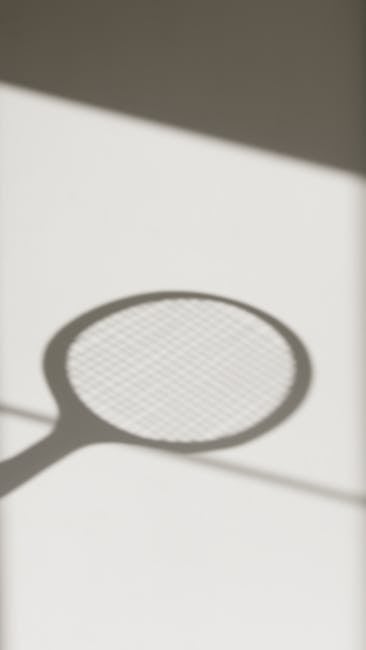How to Choose a Badminton Racket for Advanced Techniques
Choosing the right badminton racket is crucial for advanced players looking to enhance their gameplay. A well-suited racket can significantly improve your performance, offer better control, and help you execute advanced techniques with ease. In this comprehensive guide, we’ll delve into the key factors to consider when selecting a badminton racket tailored for advanced techniques.
Understanding Racket Specifications
Before diving into specific features, it’s essential to understand the basic specifications of a badminton racket. These include weight, balance, string tension, and grip size. Each of these elements can impact your playing style and effectiveness on the court.
Weight Classifications
Badminton rackets are categorized by weight, typically ranging from 70g to 100g. The weight classification is a critical factor in determining the racket’s maneuverability and power. Generally, rackets are divided into three categories:
- Lightweight (70g-84g): Ideal for players focusing on speed and quick reactions. These rackets are easier to handle and allow for rapid swings.
- Medium weight (85g-89g): Offers a balance between power and control, suitable for all-around players.
- Heavyweight (90g-100g): Favored by players who prioritize power in their smashes and clears.
Balance Point
The balance point of a racket can be head-heavy, head-light, or evenly balanced. Understanding the balance point is crucial for advanced techniques:
- Head-Heavy: Provides more power in smashes and clears, suitable for aggressive players.
- Head-Light: Offers better control and maneuverability, ideal for defensive and net play.
- Even Balance: A versatile choice that offers a mix of power and control.
Choosing the Right String Tension
String tension plays a pivotal role in the performance of a badminton racket. For advanced players, selecting the optimal tension is crucial for executing advanced techniques.
Low vs. High String Tension
String tension generally ranges between 18 lbs to 30 lbs. Here’s how different tension levels affect gameplay:
- Low Tension (18-23 lbs): Offers a larger sweet spot, which is forgiving for off-center hits and provides more power.
- High Tension (24-30 lbs): Provides better control and precision, allowing skilled players to execute delicate net shots and slices more effectively.
For advanced techniques, a string tension between 24-28 lbs is recommended, depending on personal preference and playing style.
Grip Size and Material
The grip size and material of a racket can significantly influence your comfort and control during play. Advanced players should pay attention to these aspects for better performance.
Finding the Right Grip Size
Grip sizes are generally categorized as G1 to G5, with G1 being the largest. The right grip size depends on personal comfort and playing style:
- Smaller Grips (G4, G5): Allow for more wrist action and control, ideal for players who rely on quick wrist movements.
- Larger Grips (G1, G2, G3): Provide a secure hold for players who prefer a firm grip during powerful smashes.
Material Considerations
Common grip materials include synthetic, towel, and rubber. Each has its pros and cons:
- Synthetic: Durable and offers a consistent feel.
- Towel: Absorbs sweat effectively, preferred for humid conditions.
- Rubber: Provides excellent traction and durability.
Material and Construction
The material and construction of a racket affect its weight, durability, and performance. Advanced players should consider rackets made from high-quality materials for optimal results.
Common Materials
- Graphite: Lightweight, durable, and provides excellent flexibility and power.
- Carbon Fiber: Offers superior strength-to-weight ratio, enhancing control and power.
- Titanium: Adds strength and reduces weight, ideal for aggressive play.
For advanced techniques, graphite or carbon fiber rackets are highly recommended due to their balance of power, control, and durability.
Consider Your Playing Style
Your playing style should heavily influence your racket choice. Advanced players typically fall into one of three categories: aggressive, defensive, or all-rounders.
Aggressive Players
Aggressive players focus on powerful shots and smashes. A head-heavy racket with high string tension is ideal for maximizing power.
Defensive Players
Defensive players prioritize control and precision. A head-light racket with moderate tension offers better maneuverability and control for net play and drop shots.
All-Rounders
All-round players require a versatile racket that offers a balance of power and control. An even-balanced racket with medium tension is suitable for this style.
Test Before You Buy
It’s crucial to test a racket before making a purchase. Most sports stores offer demo rackets for trial. Testing allows you to experience the racket’s feel, balance, and performance firsthand, ensuring it suits your playing style.
Factors to Assess During Testing
- Comfort: Ensure the racket feels comfortable in your hand and during swings.
- Balance: Check if the balance aligns with your playing style.
- Control and Power: Evaluate how well you can control the shuttle and generate power.
Testing multiple rackets will help you make a more informed decision and find the perfect match for your advanced techniques.
Conclusion
Choosing the right badminton racket for advanced techniques requires careful consideration of various factors, including weight, balance, string tension, grip size, material, and playing style. By understanding these elements and testing different options, advanced players can find a racket that enhances their performance and allows them to execute complex techniques with precision and power. Remember, the ideal racket is one that complements your unique playing style and helps you reach your full potential on the court.
Top on Sale Badminton Racket Recommendation
